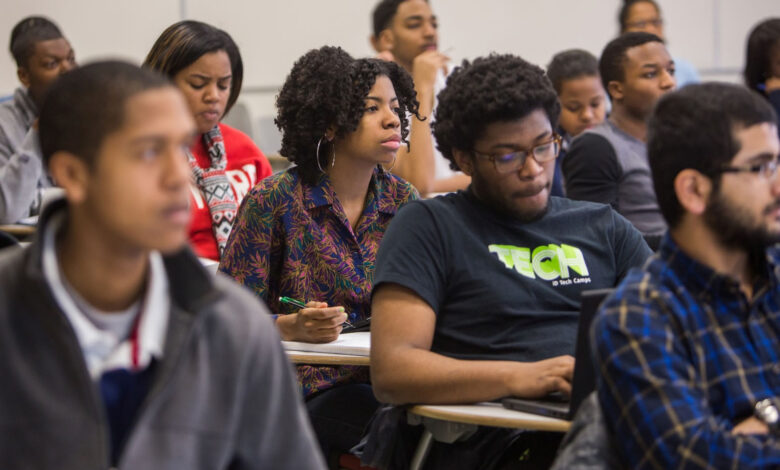
Equitable Value Explorer is a Gamechanger in Understanding Postsecondary Value
Even though college is one of the biggest investments a person will make in his or her lifetime, that decision is often made absent any information about postsecondary value.
By Allan Golston | The Bill and Melinda Gates Foundation
When most people make a decision about attending college, they use the best information they have to make the best choice at the time. I did. However, there’s no clear roadmap to an easy decision and what matters most to one person may matter least to another. Weighing factors such as cost, degree offerings, location, size, familiarity, and even famous alumni all come into consideration.
Even though college is one of the biggest investments a person will make in his or her lifetime, that decision is often made absent any information about postsecondary value.
I remember grappling with a college decision and having no information about postsecondary value at the time. Like so many others, I assumed the college I chose would be a smart investment. Shouldn’t they all be? In retrospect, I had no clue. Even more troubling, I had no way of understanding or comparing the value of one college over another. There was no framework for looking at value equitably.
In a previous post, I shared my personal journey to obtaining a college education and my ability to pay off my college debt and realize the value of my investment in education. Luck had a lot to do with it. But we can’t and shouldn’t rely on luck today.
The public conversation about the value of a postsecondary education is gaining momentum among policymakers, researchers, and institutional leaders. Central to that conversation is this question: What is college worth?
There are several ways to approach this question about the value of higher education, which should provide students and society both economic and non-economic returns, mobility, and racial and socioeconomic justice.
Postsecondary value shouldn’t be defined by financial return only.
However, Americans’ perception of the value of education after high school has been affected by the pandemic with the percent of people rating their return on investment “excellent” or “good” decreasing from 76% pre-pandemic to 67% currently. This makes understanding equitable value – who benefits and how they benefit – more important than ever.
Institutional leaders and policymakers need to “know their numbers” and have reliable, transparent, and accessible data that show the return on investment in education after high school. That data can help them make more informed decisions about where to invest limited resources and put more students on the path to success.
This premise is why the Postsecondary Value Commission supported by the foundation and led by the Institute for Higher Education Policy devoted two years of careful study to the question.
This week, as part of that work, a new, innovative diagnostic tool called the Equitable Value Explorer is being released that puts the commission’s approach to defining, measuring, and acting on the definition of value into effect. This new tool – which captures earnings outcomes for students at more than 4,000 colleges and universities – allows institutions to better understand whether their students are getting ahead, simply getting by, or even falling behind.
Earlier this year, the commission released a report that found that value can and must be improved, especially for Black, Latino, Indigenous, and underrepresented Asian American/Pacific Island students, students from low-income backgrounds, and women. There are thousands of students – many of whom are students of color and students from low-income backgrounds – who attend college and are no better off economically 10 years later. These outcomes are unacceptable.
The data available in the Explorer help institutional leaders and policymakers better understand how students and the colleges and universities that serve them are progressing in terms of delivering and realizing value, and the information can help facilitate improvements in areas such as better targeting of financial aid, strengthening student advising, and creating clearer and more streamlined paths to certificates and degrees.
Notably, the commission is not alone in the push for better data when it comes to value:
• Major college rankings such as Washington Monthly and Forbes are now including earnings/return on investment data
• Institutional accreditors such as WASC Senior College and University Commission are creating public dashboards that include student outcomes like earnings and debt repayment
• In Washington D.C., there is growing bipartisan momentum for changes in federal data systems that will allow for better accounting of outcomes for all students in all institutions.
At the foundation, we believe that education and economic mobility and opportunity are inextricably linked, and we also believe in the power of data and transparency. Our hope is that the push to drive a discussion around postsecondary value is used not for blaming or shaming, but for improvement.
While the Equitable Value Explorer is a tool aimed at helping institutional leaders and decisionmakers, future iterations will be more consumer-facing and focused on end users such as students and their families.
Having data is important, but using that data is essential for change. Utilizing the resources available through the Equitable Value Explorer is a strong step toward determining postsecondary value and answering this question: What is college worth?










